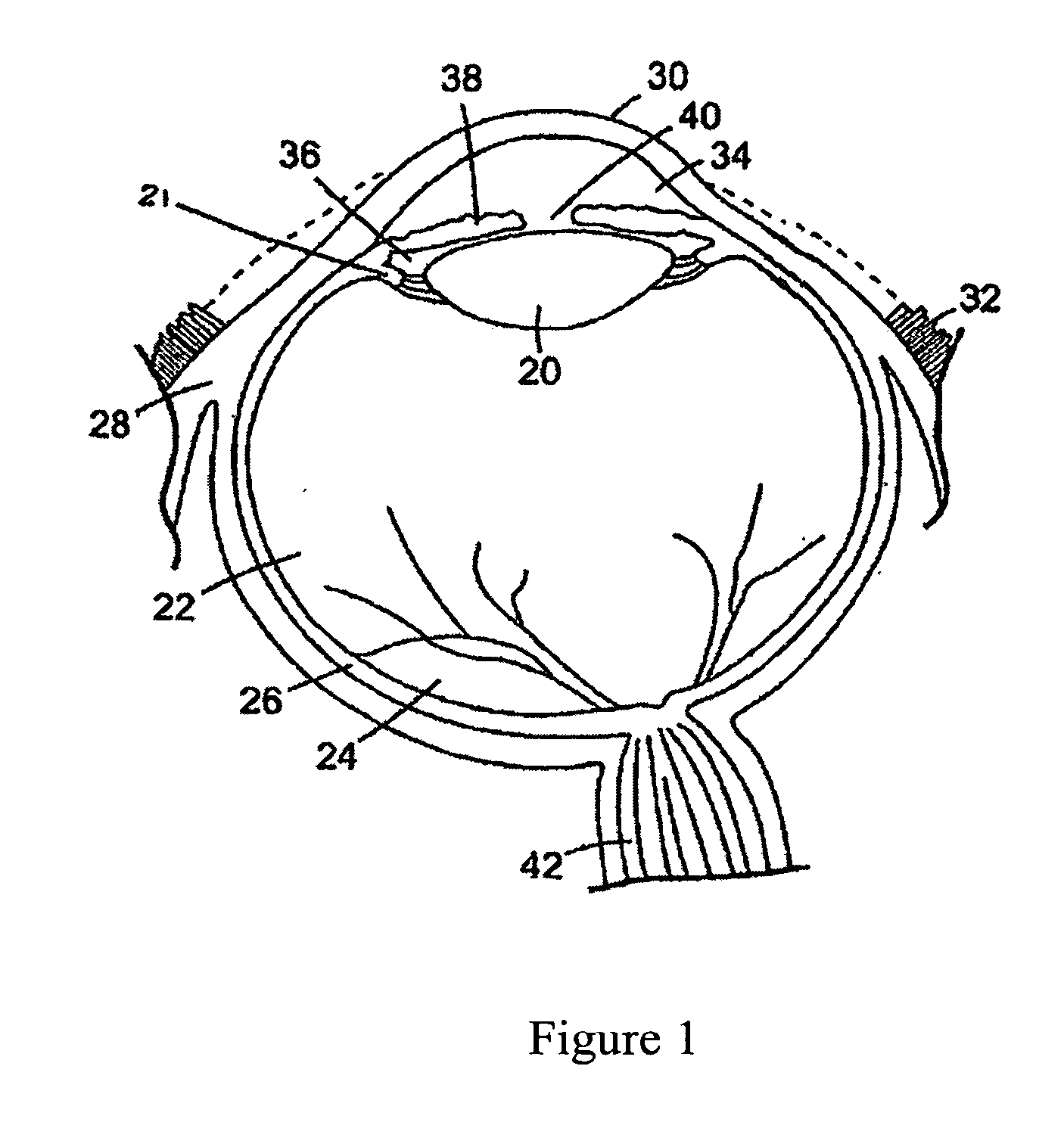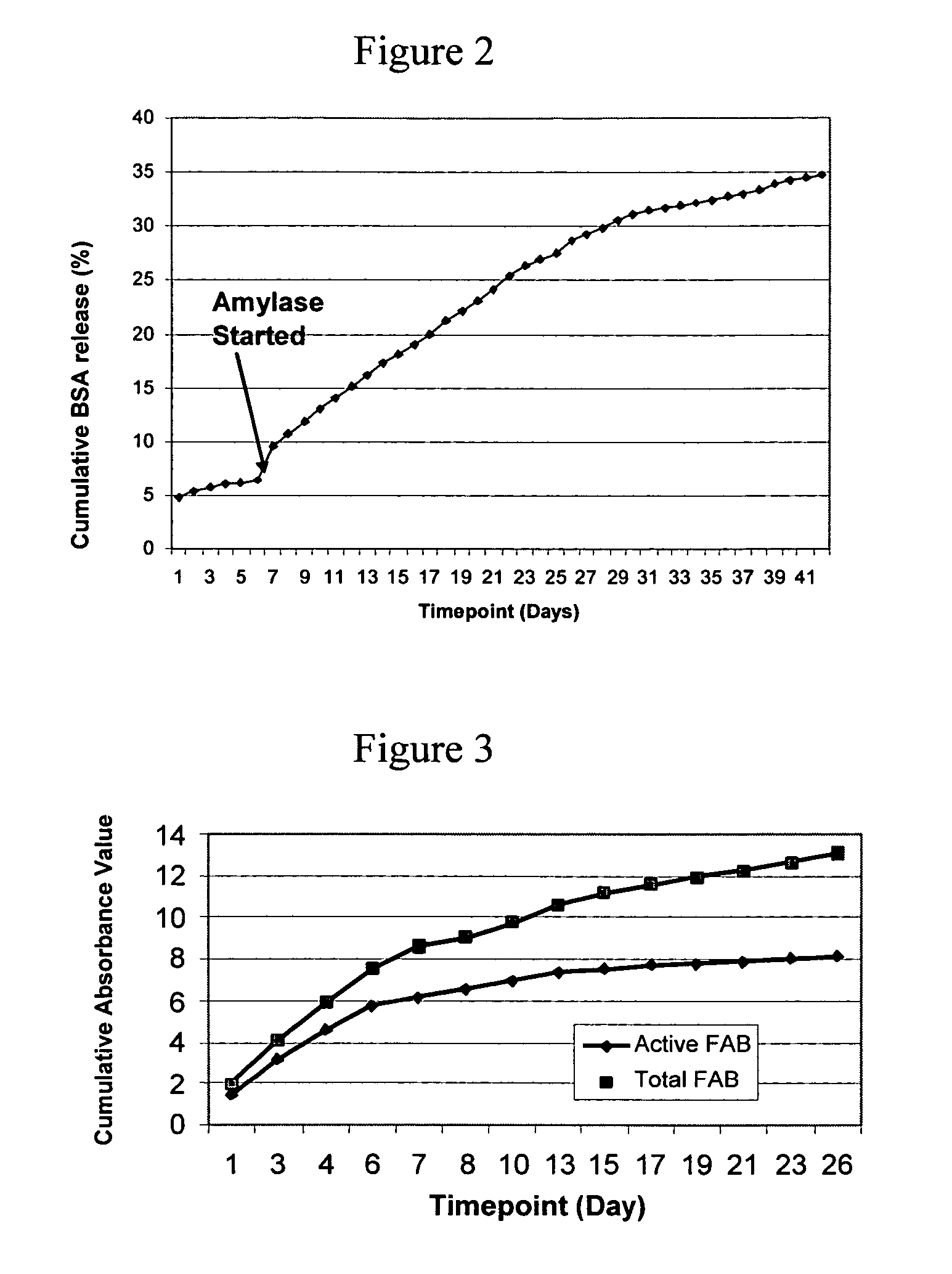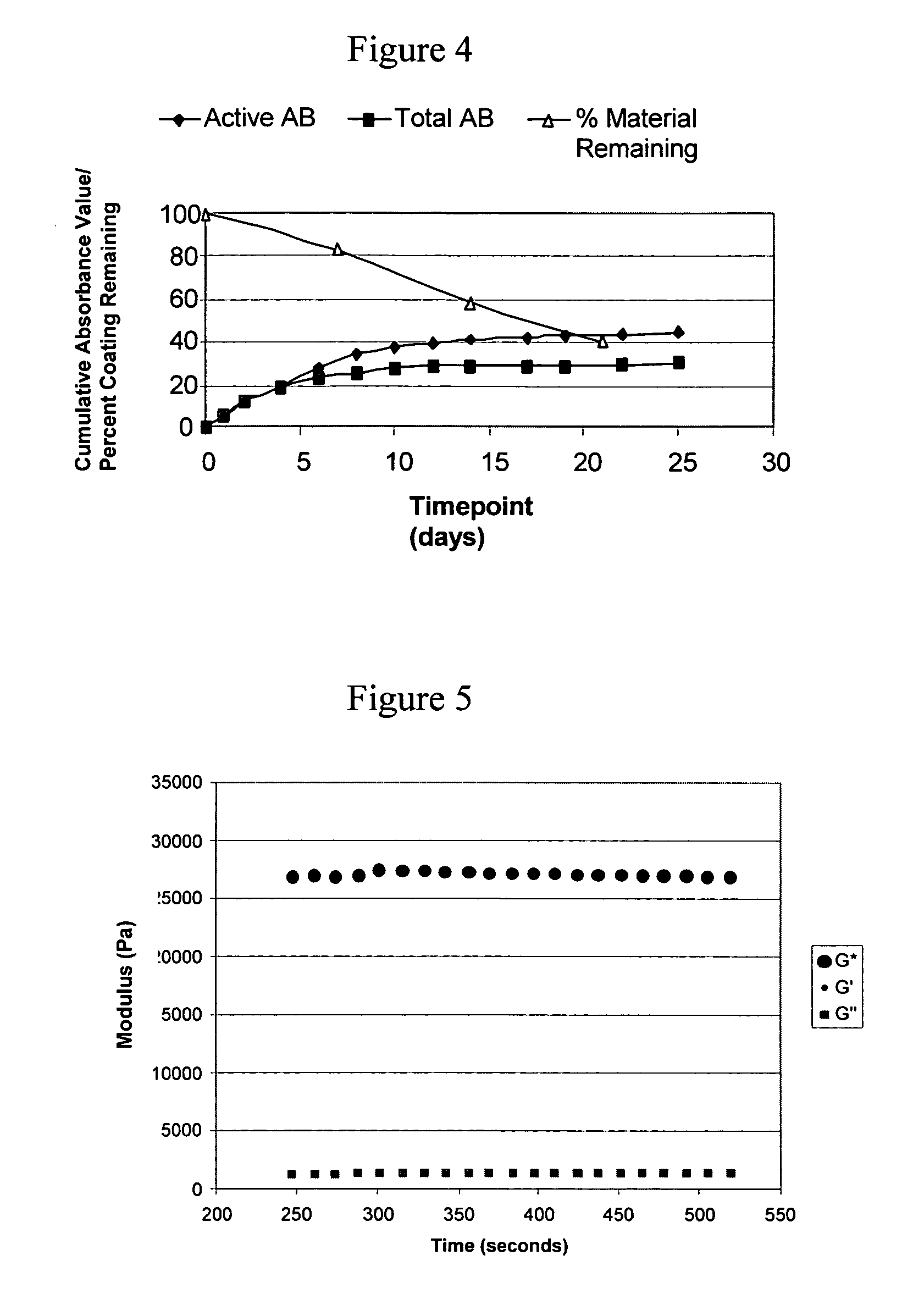In VIVO formed matrices including natural biodegradale polysaccharides and ophthalmic uses thereof
a biodegradable polysaccharide and in vivo technology, applied in the field of in vivo formed matrices, can solve the problems of increasing the risk of complications, inability to effectively administer drugs systemically, and limited injection of drugs, so as to promote the polymerization of natural biodegradable polysaccharides and ensure stability
- Summary
- Abstract
- Description
- Claims
- Application Information
AI Technical Summary
Benefits of technology
Problems solved by technology
Method used
Image
Examples
example 1
Synthesis of Acrylated-Amylose
[0304] Amylose having polymerizable vinyl groups was prepared by mixing 0.75 g of amylose (A0512; Aldrich) with 100 mL of methylsulfoxide (J T Baker) in a 250 mL amber vial, with stirring. After one hour, 2 mL of triethylamine (TEA; Aldrich) was added and the mixture was allowed to stir for 5 minutes at room temperature. Subsequently, 2 mL of glycidyl acrylate (Polysciences) was added and the amylose and glycidyl acrylate were allowed to react by stirring overnight at room temperature. The mixture containing the amylose-glycidyl acrylate reaction product was dialyzed for 3 days against distlled (DI) water using continuous flow dialysis. The resultant acrylated-amylose (0.50 g; 71.4% yield) was then lyophilized and stored desiccated at room temperature with protection from light.
example 2
Synthesis of MTA-PAAm
[0305] A polymerization initiator was prepared by copolymerizing a methacrylamide having a photoreactive group with acrylamide.
[0306] A methacrylamide-oxothioxanthene monomer (N-[3-(7-Methyl-9-oxothioxanthene-3-carboxamido) propyl]methacrylamide (MTA-APMA)) was first prepared. N-(3-aminopropyl)methacrylamide hydrochloride (APMA), 4.53 g (25.4 mmol), prepared as described in U.S. Pat. No. 5,858,653, Example 2, was suspended in 100 mL of anhydrous chloroform in a 250 mL round bottom flask equipped with a drying tube. 7-methyl-9-oxothioxanthene-3-carboxylic acid (MTA) was prepared as described in U.S. Pat. No. 4,506,083, Example D. MTA-chloride (MTA-Cl) was made as described in U.S. Pat. No. 6,007,833, Example 1. After cooling the slurry in an ice bath, MTA-Cl (7.69 g; 26.6 mmol) was added as a solid with stirring to the APMA-chloroform suspension. A solution of 7.42 mL (53.2 mmol) of TEA in 20 mL of chloroform was then added over a 1.5 hour time period, followed...
example 3
Preparation of 1-(6-oxo-6-hydroxyhexyl)maleimide (Mal-EACA)
[0308] A maleimide functional acid was prepared in the following manner, and was used in Example 4. EACA (6-aminocaproic acid), (100 g; 0.762 moles), was dissolved in 300 mL of acetic acid in a three-neck, three liter flask equipped with an overhead stirrer and drying tube. Maleic anhydride, (78.5 g; 0.801 moles), was dissolved in 200 mL of acetic acid and added to the EACA solution. The mixture was stirred one hour while heating on a boiling water bath, resulting in the formation of a white solid. After cooling overnight at room temperature, the solid was collected by filtration and rinsed two times with 50 mL of hexane each rinse. After drying, the yield of the (z)-4-oxo-5-aza-undec-2-endioic acid (Compound 1) was in the range of 158-165 g (90-95%) with a melting point of 160-165° C. Analysis on an NMR spectrometer was consistent with the desired product: 1H NMR (DMSO-d6, 400 MHz) δ6.41, 6.24 (d, 2H, J=12.6 Hz; vinyl prot...
PUM
| Property | Measurement | Unit |
|---|---|---|
| width | aaaaa | aaaaa |
| width | aaaaa | aaaaa |
| thickness | aaaaa | aaaaa |
Abstract
Description
Claims
Application Information
 Login to View More
Login to View More - R&D
- Intellectual Property
- Life Sciences
- Materials
- Tech Scout
- Unparalleled Data Quality
- Higher Quality Content
- 60% Fewer Hallucinations
Browse by: Latest US Patents, China's latest patents, Technical Efficacy Thesaurus, Application Domain, Technology Topic, Popular Technical Reports.
© 2025 PatSnap. All rights reserved.Legal|Privacy policy|Modern Slavery Act Transparency Statement|Sitemap|About US| Contact US: help@patsnap.com



